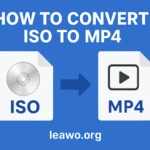The modern business landscape demands unprecedented levels of efficiency, precision, and strategic foresight. Companies across industries are discovering that success hinges not only on having robust operational systems but also on understanding fundamental business concepts that drive long-term growth. From manufacturing operations that require comprehensive material tracking through BOM full form documentation to retail enterprises managing complex inventory systems, businesses must embrace both technological solutions and sound financial principles. This comprehensive guide explores how organizations can leverage integrated business management systems while implementing strategic financial frameworks that ensure sustainable growth and competitive advantage in an increasingly digital marketplace.
The Foundation of Modern Business Operations: Understanding Core Systems
Business operations in the 21st century require sophisticated understanding of interconnected systems that manage everything from raw materials to customer relationships. The complexity of modern commerce demands that business leaders comprehend not only the technological tools at their disposal but also the fundamental business principles that guide strategic decision-making.
Enterprise Resource Planning (ERP) systems have evolved from simple inventory tracking tools to comprehensive business management platforms that integrate every aspect of organizational operations. These systems provide real-time visibility into business processes, enabling data-driven decision making that can significantly impact both operational efficiency and financial performance. The integration of various business functions through centralized platforms has become essential for maintaining competitive advantage.
Manufacturing businesses particularly benefit from sophisticated material management systems that track components from procurement through final product delivery. Understanding material requirements, supplier relationships, and production workflows requires systematic approaches that can handle complex interdependencies while maintaining cost effectiveness. These operational foundations directly influence financial outcomes and strategic planning capabilities.
Material Management and Bill of Materials: The Backbone of Manufacturing Excellence
Manufacturing operations depend heavily on accurate material planning and component tracking systems. The Bill of Materials serves as the fundamental document that defines product structure, specifying all components, sub-assemblies, and raw materials required for production. This documentation becomes increasingly critical as products become more complex and supply chains more global.
Modern manufacturing environments require sophisticated systems that can manage multi-level BOMs, handle engineering changes efficiently, and provide accurate cost calculations for financial planning. These systems must integrate with procurement, inventory management, and production planning modules to ensure seamless operations. The accuracy of BOM data directly impacts material costs, production efficiency, and ultimately, profitability.
Effective BOM management extends beyond simple component lists to include detailed specifications, supplier information, cost data, and quality requirements. Advanced systems provide version control, change management workflows, and impact analysis capabilities that help organizations manage product complexity while maintaining operational efficiency. This systematic approach to material management creates the foundation for accurate financial planning and cost control.
Industry-Specific Solutions: Tailored Technology for Specialized Markets
Different industries require specialized approaches to business management, with unique challenges that demand customized solutions. The jewelry industry, for example, faces distinct operational challenges including precious metal tracking, gemstone inventory management, and complex pricing structures based on fluctuating commodity markets.
Jewellery software solutions address these specific requirements through features designed for precious metal weight tracking, stone certification management, and multi-location inventory control. These systems must handle the unique aspects of jewelry retail including custom design workflows, repair service management, and consignment tracking. Integration with point-of-sale systems, customer relationship management, and financial reporting creates comprehensive business management platforms.
The complexity of jewelry operations requires systems that can manage both retail and wholesale operations, handle various pricing methods, and provide detailed reporting for inventory valuation. Advanced features include photo management for catalog development, customer preference tracking for personalized service, and integration with security systems for high-value inventory protection. These specialized solutions demonstrate how industry-specific requirements drive technology development and implementation strategies.
Financial Strategy Integration: Connecting Operations with Long-term Goals
Successful businesses understand that operational efficiency must align with strategic financial objectives. The integration of business management systems with financial planning processes creates opportunities for improved decision-making and resource allocation. Technology platforms that provide real-time financial data enable more responsive strategic adjustments and better risk management.
Financial management within integrated business systems goes beyond basic accounting to include budgeting, forecasting, and performance analysis capabilities. These tools help organizations track key performance indicators, analyze profitability by product line or customer segment, and identify opportunities for operational improvements. The connection between operational data and financial metrics provides insights that drive strategic planning processes.
Modern business management systems increasingly incorporate advanced analytics and reporting capabilities that support both operational management and strategic planning. Real-time dashboards, automated reporting, and predictive analytics help organizations identify trends, anticipate challenges, and capitalize on opportunities. This integration of operational and financial data creates a foundation for informed decision-making at all organizational levels.
Strategic Decision Making: Balancing Short-term Performance with Long-term Vision
Business success requires careful balance between immediate operational needs and long-term strategic objectives. Organizations must navigate the ongoing tension between maximizing current performance and investing in future growth opportunities. This balance becomes particularly challenging in competitive markets where short-term pressures can conflict with long-term sustainability.
Effective strategic planning requires comprehensive understanding of market dynamics, competitive positioning, and internal capabilities. Business management systems provide the data foundation for this analysis, but strategic success depends on how organizations interpret and act on this information. The integration of operational metrics with strategic planning processes helps ensure that day-to-day decisions support long-term objectives.
Technology solutions enable more sophisticated strategic analysis through advanced reporting, scenario modeling, and predictive analytics capabilities. Organizations can evaluate different strategic options, assess potential outcomes, and make more informed decisions about resource allocation and investment priorities. This analytical capability becomes increasingly important as business environments become more complex and competitive pressures intensify.
Implementation Strategies: Maximizing Technology Investment Returns
Successful technology implementation requires careful planning, stakeholder engagement, and systematic change management. Organizations must evaluate their current processes, identify improvement opportunities, and design implementation strategies that minimize disruption while maximizing benefits. This process involves not only technical considerations but also organizational change management and user training requirements.
The selection of appropriate business management systems depends on organizational size, industry requirements, growth projections, and budget constraints. Comprehensive needs assessment helps organizations identify critical features, evaluate vendor capabilities, and make informed purchasing decisions. Implementation planning must account for data migration, system integration, user training, and ongoing support requirements.
Change management becomes particularly critical during technology implementations, as user adoption directly impacts system effectiveness. Organizations must invest in training, communication, and support processes that help users understand system benefits and develop necessary skills. Ongoing optimization and continuous improvement processes ensure that technology investments continue to deliver value as business needs evolve.
Cost Management and Operational Efficiency: Driving Profitability Through Technology
Technology investments must demonstrate clear returns through improved operational efficiency, reduced costs, or enhanced revenue generation. Business management systems contribute to profitability through various mechanisms including reduced manual processing, improved inventory management, better customer service, and enhanced decision-making capabilities.
Inventory management represents one of the most significant opportunities for cost reduction and efficiency improvement. Advanced systems provide real-time visibility into stock levels, automate reordering processes, and optimize inventory investment. These capabilities reduce carrying costs, minimize stockouts, and improve cash flow management. The integration of inventory management with sales forecasting and supplier management creates additional optimization opportunities.
Process automation within business management systems reduces labor costs while improving accuracy and consistency. Automated workflows for order processing, invoicing, reporting, and compliance reduce manual effort while minimizing errors. These efficiency gains create cost savings that can be reinvested in growth initiatives or passed through to customers as competitive advantages.
Customer Relationship Management: Technology-Enabled Service Excellence
Modern business success increasingly depends on customer satisfaction and loyalty, making customer relationship management a critical component of business strategy. Integrated business management systems provide comprehensive customer information that enables personalized service, targeted marketing, and proactive relationship management.
Customer data integration across sales, service, and marketing functions creates opportunities for improved customer experiences and increased revenue per customer. Advanced CRM capabilities include customer segmentation, preference tracking, communication history, and service request management. This comprehensive customer view enables more effective sales processes and higher customer satisfaction levels.
The integration of customer relationship management with operational systems provides additional benefits including improved order accuracy, faster service delivery, and better communication throughout the customer lifecycle. Real-time access to customer information, order status, and service history enables more responsive customer service and stronger relationship development.
Performance Measurement and Continuous Improvement: Data-Driven Excellence
Effective business management requires comprehensive performance measurement systems that track key metrics, identify trends, and support continuous improvement initiatives. Modern business management systems provide extensive reporting and analytics capabilities that enable organizations to monitor performance across multiple dimensions.
Key performance indicators must align with strategic objectives while providing actionable insights for operational improvements. Financial metrics, operational efficiency measures, customer satisfaction indicators, and quality metrics combine to create comprehensive performance dashboards. Regular performance review processes help organizations identify improvement opportunities and track progress toward strategic goals.
Continuous improvement processes benefit significantly from technology-enabled data collection and analysis. Automated data capture, trend analysis, and exception reporting help organizations identify improvement opportunities more quickly and implement changes more effectively. The integration of performance measurement with operational systems creates feedback loops that drive ongoing optimization and innovation.
Future Trends and Technology Evolution: Preparing for Tomorrow’s Challenges
The business technology landscape continues evolving rapidly, with new capabilities and approaches emerging regularly. Artificial intelligence, machine learning, Internet of Things (IoT) sensors, and cloud computing platforms are transforming how businesses operate and compete. Organizations must stay informed about technological developments while making strategic decisions about adoption timing and implementation approaches.
Emerging technologies offer exciting possibilities for improved operational efficiency, enhanced customer experiences, and new business models. However, successful adoption requires careful evaluation of costs, benefits, and implementation requirements. Organizations must balance innovation with operational stability while building capabilities that support long-term competitive advantage.
The integration of artificial intelligence and machine learning capabilities into business management systems promises significant advances in predictive analytics, process automation, and decision support. These technologies can improve demand forecasting, optimize inventory levels, personalize customer experiences, and automate routine tasks. Early adopters who successfully implement these capabilities will likely gain significant competitive advantages.
Financial Management Philosophy: Strategic Approaches to Business Growth
Understanding fundamental financial principles becomes increasingly important as businesses grow and face more complex strategic decisions. The approach organizations take to financial management directly impacts their ability to achieve sustainable growth and long-term success. Difference between profit maximization and wealth maximization represents a critical strategic consideration that influences resource allocation, investment decisions, and stakeholder relationships.
Modern businesses must navigate the complex relationship between short-term profitability and long-term value creation. This requires sophisticated understanding of financial metrics, stakeholder expectations, and market dynamics. Business management systems provide the data foundation for these strategic decisions, but success depends on how organizations interpret and act on this information within their broader strategic framework.
The integration of financial strategy with operational management creates opportunities for more effective resource allocation and strategic planning. Organizations that successfully align their technology investments, operational processes, and financial strategies are better positioned to achieve sustainable growth and competitive advantage in dynamic market environments.
Frequently Asked Questions (FAQs)
Q: How do I determine which business management system is right for my organization? A: Start with a comprehensive needs assessment that evaluates your current processes, identifies pain points, and defines success criteria. Consider factors like industry requirements, company size, growth projections, budget constraints, and integration needs. Engage key stakeholders in the evaluation process and request demonstrations from multiple vendors.
Q: What are the typical implementation timelines for comprehensive business management systems? A: Implementation timelines vary significantly based on system complexity, organization size, and customization requirements. Simple implementations may take 3-6 months, while complex, multi-location deployments can require 12-18 months or longer. Proper planning, stakeholder engagement, and change management significantly impact implementation success and timeline.
Q: How can I ensure user adoption during system implementation? A: Focus on change management from the beginning of the project. Involve key users in system selection and design processes. Provide comprehensive training that goes beyond technical features to include business benefits. Create user champions who can support their colleagues. Implement feedback mechanisms and address concerns promptly.
Q: What ongoing costs should I expect after system implementation? A: Ongoing costs typically include software maintenance fees, technical support, hardware maintenance, user training, and system upgrades. Cloud-based solutions may have lower infrastructure costs but higher subscription fees. Budget for ongoing optimization and customization as business needs evolve.
Q: How do I measure the ROI of business management system investments? A: Establish baseline metrics before implementation covering areas like labor costs, inventory levels, customer service times, and error rates. Track improvements in operational efficiency, cost reduction, revenue growth, and customer satisfaction. Consider both quantitative benefits and qualitative improvements in decision-making and strategic capabilities.
Q: What security considerations are important for business management systems? A: Implement comprehensive security measures including user authentication, role-based access controls, data encryption, regular backups, and security monitoring. Ensure compliance with relevant industry regulations and standards. Develop incident response procedures and conduct regular security assessments.
Q: How can small businesses benefit from enterprise-level business management systems? A: Modern systems offer scalable solutions that grow with business needs. Small businesses can start with basic functionality and add features as they expand. Cloud-based solutions reduce upfront infrastructure costs. Focus on systems that provide immediate benefits while offering long-term scalability.
Q: What role does mobile access play in modern business management systems? A: Mobile access enables real-time information access and decision-making from anywhere. Field sales teams, remote workers, and traveling managers benefit from mobile capabilities. Consider mobile functionality for key processes like order entry, inventory tracking, and customer service to improve responsiveness and efficiency.
The successful integration of technology solutions with strategic financial planning represents a fundamental requirement for modern business success. Organizations that effectively combine operational excellence with sound financial strategy will be best positioned to navigate competitive challenges and achieve sustainable growth in an increasingly complex business environment.

















